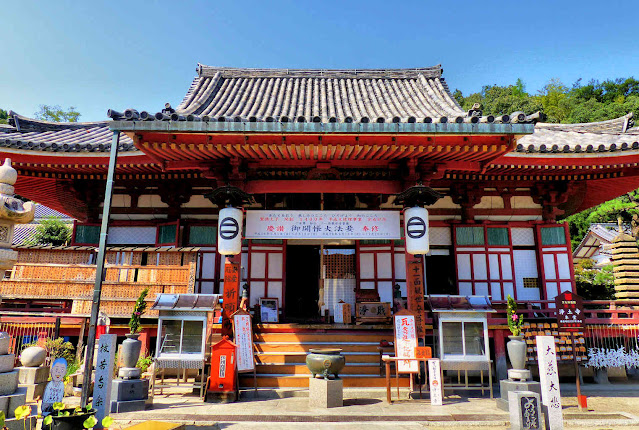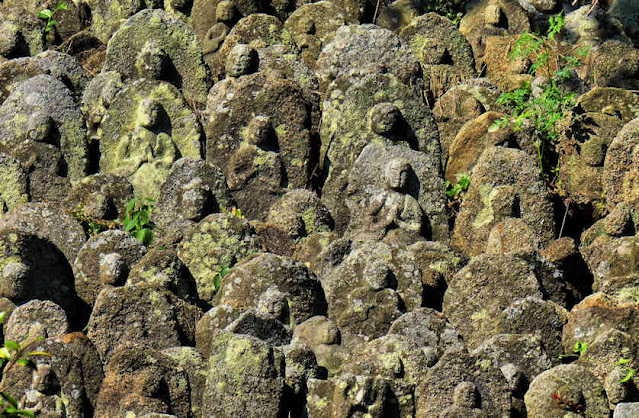The pagoda at Rurikoji Temple in Yamaguchi is considered one of the top3 pagodas in all of Japan, along with one at Daigoji Temple in Kyoto and one at Horyuji Temple in Nara.
It is registered as a National Treasure and was built in 1442.
It is 31.2 meters tall with cypress bark roofs. It is mostly Japanese in style, though with some Chinese Zen influences...
It was built by Ouchi Moriharu to memorialize his brother, Ouchi Yoshihiro who died at the Battle of Oei.
The pagoda houses an Amida statue and a statue of Yoshihiro in monk form.
It is said his coffin lies beneath the pagoda.
The grounds around the pagoda are known as Kozan Park and is a great spot for cherry blossoms, and also for autumn colours, which is when I visited.
The pagoda is illuminated every night.
The temple originally at this site was Koseki-ji. The main hall was moved to Fudo-in Temple in Hiroshima City and is also a National Treasure.
Rurikoji was founded in 1471 at a different location and was named Anyoji Temple, being renamed Rurikoji in 1497. It was moved to the current site in 1690.
It is a Soto sect Temple and the honzon is a Yakushi Nyorai, the Medicine Buddha.
The small museum in the temple is worth a visit as it has scale models of 55 other pagodas from around Japan as well as a large model of the pagoda here showing how it was constructed.
The museum also has a nice collection of masks that appealed to me, and several paintings including one attributed to Sesshu.
if you would like to subscribe by email, just leave your email address in the comments below. It will not be published or made public. I post new content almost every day, and send out an email about twice a month with short descriptions and links to the most recent posts





































































